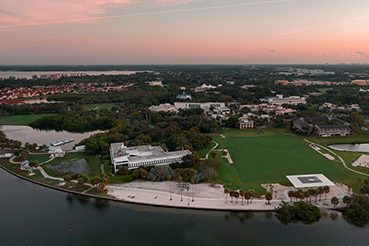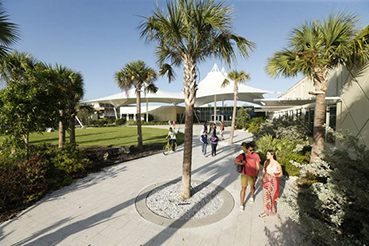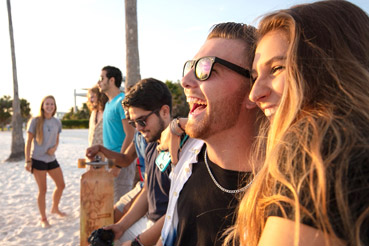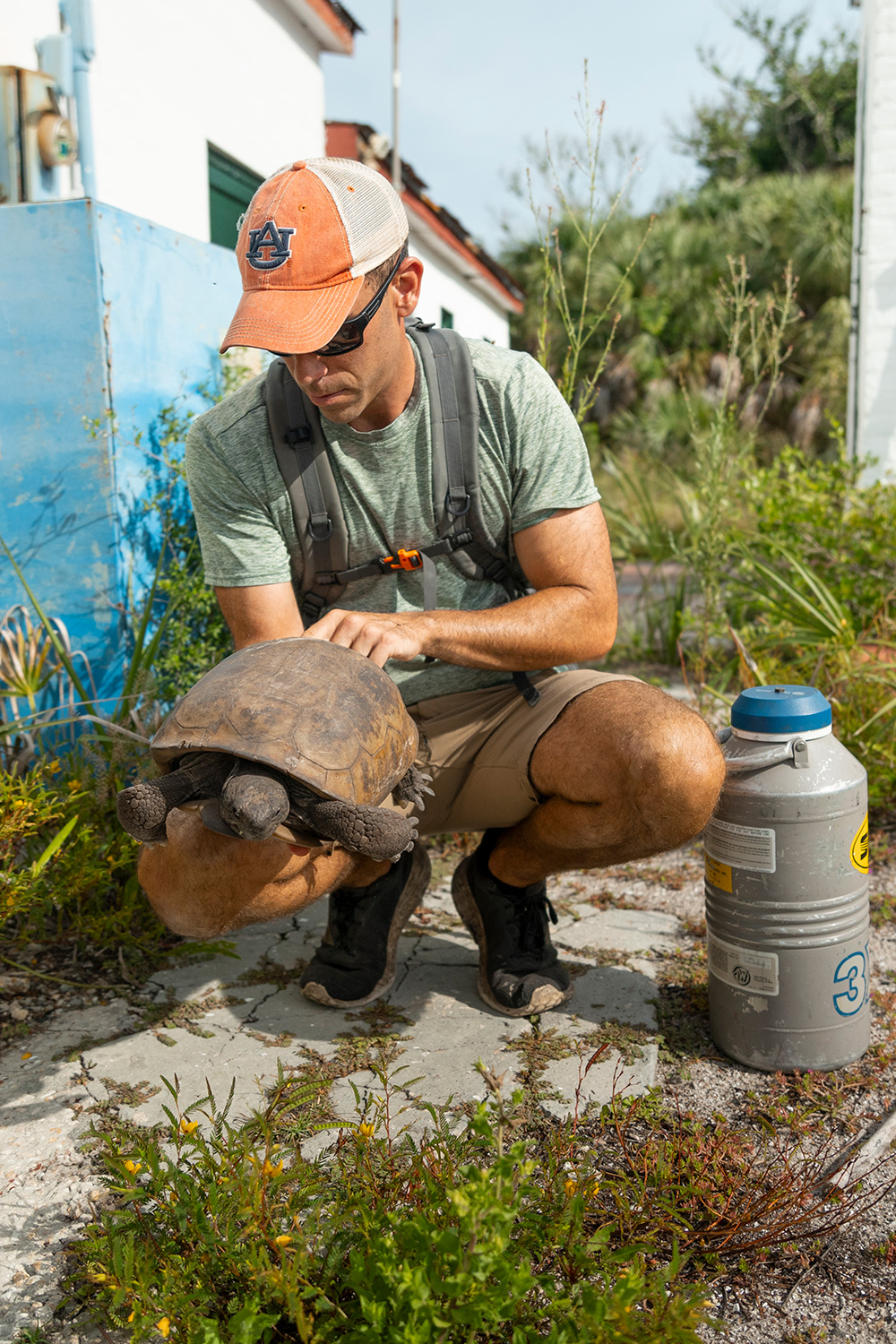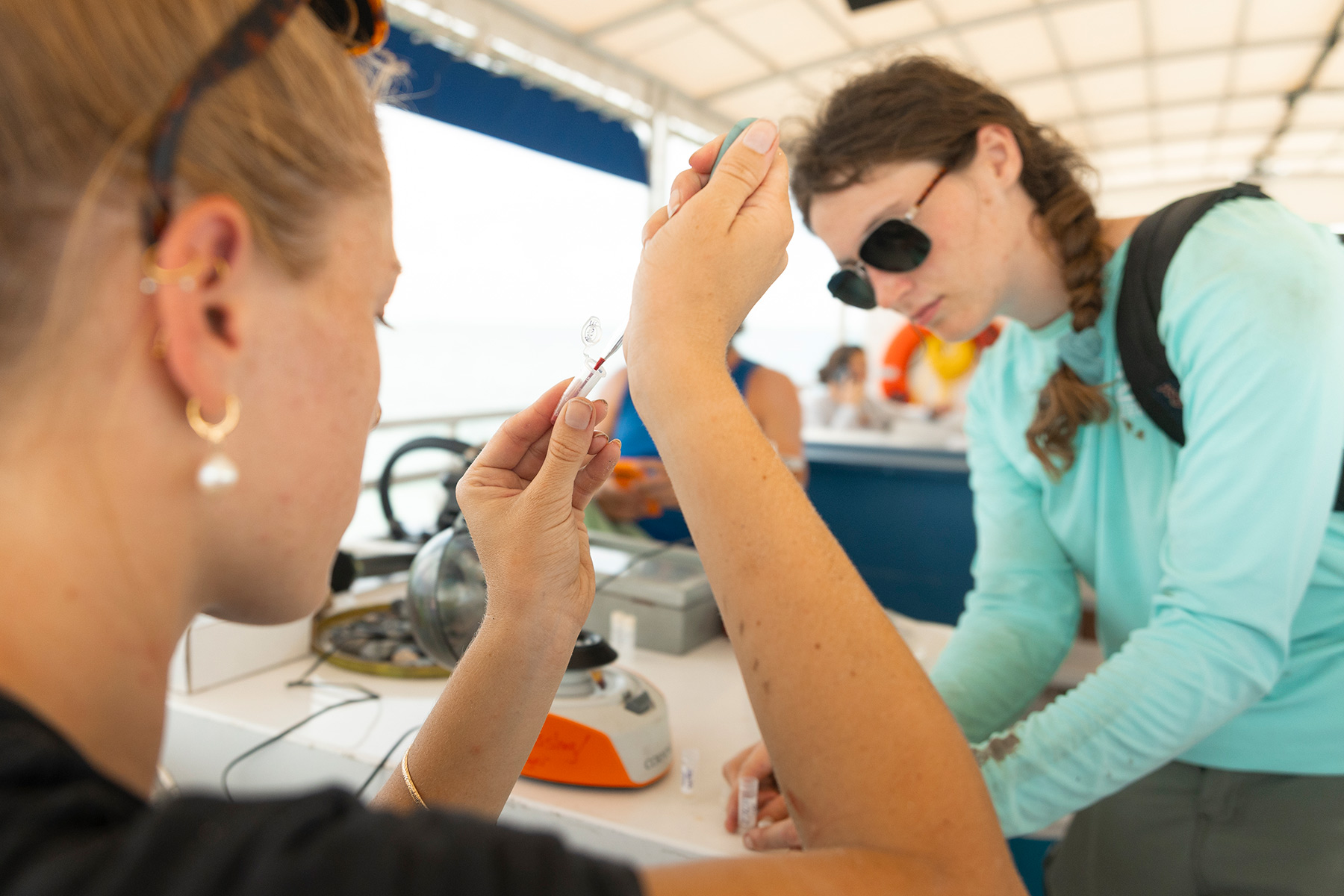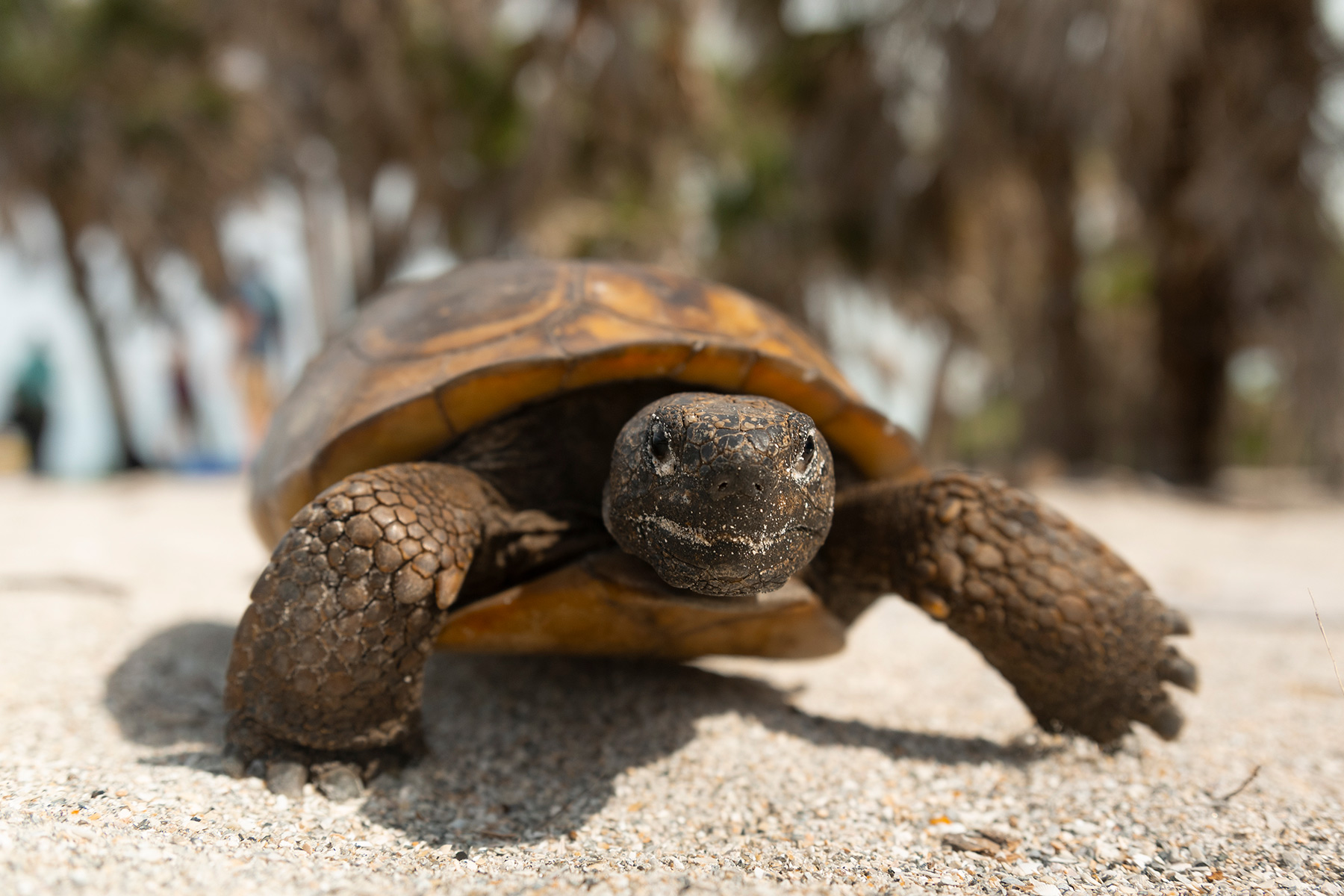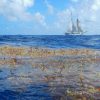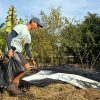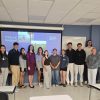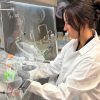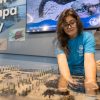Four Eckerd College students and Associate Professor of Biology Jeff Goessling, Ph.D., sat cross-legged in the sand in Egmont Key State Park recently, angling for what questionable shade a few nearby palms could offer. There wasn’t much idle chatter. They were working against the clock.
The group had just collected two of the several hundred gopher tortoises that inhabit Egmont Key, a secluded island at the mouth of Tampa Bay. In the five to seven minutes they had allotted themselves, the Eckerd cohort had to weigh, measure, identify, mark, draw blood from and check the general health of a squirming rock with legs that has a habit of expelling its waste when handled.
Goessling and the students had arrived at the island by boat from Fort De Soto Park around 9:30 a.m. It was now almost 11:00. Despite helicopter-size mosquitoes and 90-plus–degree heat, the group went about their work quietly and with purpose.
They were nearly halfway through a six-week internship led by Goessling, who also is the faculty sponsor of Eckerd’s Herpetological Society. In addition, Goessling is the Florida representative to the Gopher Tortoise Council, a nonprofit founded in 1978 by a group of Southeastern biologists and others concerned about the decline of the reptile.
That decline could spell trouble for many other animals. The Florida Fish and Wildlife Conservation Commission lists the gopher tortoise as a keystone species because it provides temporary or permanent refuge for as many as 350 to 400 species, whether the gopher tortoise is present or not. “The burrows are used for feeding, resting, reproduction and protection from temperature extremes, moisture loss and predators,” the FWC reports. “These species include gopher frogs, several species of snake, small invertebrates, sparrows and burrowing owls. The largest threats to gopher tortoises are habitat destruction, habitat degradation and human predation.”
Over the past several years, Goessling and his student workers released more than 150 young gopher tortoises back into their natural Alabama habitat. The tortoises had been harvested as eggs from burrows in Alabama and then hatched and reared in the Eckerd College greenhouse for more than a year as part of a Gopher Tortoise Head Start Program collaboration among Goessling’s laboratory, U.S. Fish and Wildlife Service, the Alabama Department of Conservation and Natural Resources, the Birmingham Zoo, and Auburn University.
This year, the Egmont Key Alliance reached out to Goessling about an internship opportunity. Using support from the Alliance, Eckerd College, the Alfred P. Sloan Foundation, businessman Peter Robison and Hubbard’s Marina, the Egmont Key gopher tortoise internship was born.
“The students get invaluable hands-on experience and gain exposure to wildlife biology and monitoring,” Goessling explains. “I’m really proud of them. Basically they’re competent to do this work on their own. My undergraduate students gain more experience with gopher tortoises than many postdoctoral positions doing similar work.”
Perhaps the most notable finding this year is that there are few tortoises around 10 years old and younger on Egmont Key. “We’re not certain why,” Goessling says, “but it’s probably an early indication that the youngest individuals were most impacted by the hurricanes.”
Goessling emphasizes that all tortoises collected are released unharmed at the point of capture, that tortoises and their burrows are protected by law, and that he and his students are permitted to conduct this research.
Tara Hubbard is a fourth-generation Floridian, co-founder of the environmental nonprofit Take MAR (More Action for Regeneration), founder of Wonderfield Farm at the Grove in Floral City, and board chair of the Egmont Key Alliance. It is onboard a Hubbard’s Marina ferry that the Eckerd cohort travels to and from Egmont Key five days a week.
“The Egmont Key Alliance has historically sponsored interns, and it’s something we’re happy to continue doing,” Hubbard says. “My role with Hubbard’s Marina is to help with business development, and a big issue with conservation work is transportation. So we have historically partnered with working groups like the Egmont Key Alliance and Eckerd College research teams. Hubbard’s Marina has donated the cost of their daily transportation to and from the island.
“It’s vital to be able to get out to the island to continue the work they’re doing to assess the tortoises and help to make sure they’re well cared for and preserved,” she adds. “They found Egmont Key tortoises at Fort De Soto after Helene, so we were eager to learn how the Egmont population managed to survive. But the population is apparently quite strong, so that’s really great news.”
Eckerd intern Sephie Adamson, a junior marine science and French student from Naperville, Illinois, had adopted a turtle as a pet when she was 8. She still has Isabel. “The conditions on Egmont Key have been brutal at times, but it’s so exciting to be out there in the field doing hands-on work,” Sephie says. “It more than makes up for the tough conditions. And growing up outside Chicago, I never liked winter.”
What does she see when she comes face-to-face with an animal that could easily be 50 or 60 years old? “I think it’s really amazing that they can live to be older than me or my parents. That they’re out there surviving.
“And the population on Egmont Key appears to be doing well,” she notes. “We’ve seen adults with eggs. That’s a good sign and gives us hope for the future of the species.”
@eckerdcollegefl Spending the summer with gopher tortoises on a barrier island 🐢 #reptile #florida @lindsy☀️ ♬ original sound - Eckerd College

